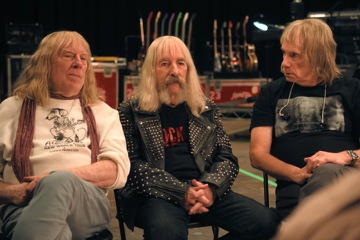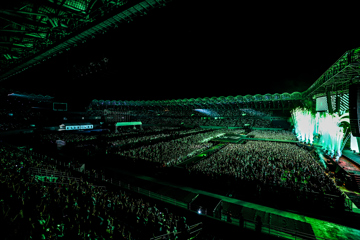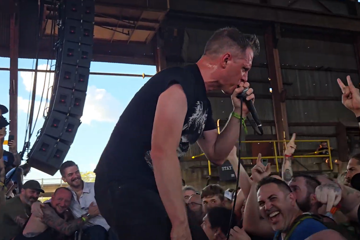The Art Of Noise
“The new album is very electronic and will need to be presented very differently when it’s played live. I don’t think it will lend itself to this grand, orchestral approach.”

One of the many delights of this year's editions of the Melbourne and Graphic festivals, The Cinematic Orchestra have been soundtracking our lives with their sumptuous scores for imaginary films for many years. The outfit, which was brought together by Jason Swinscoe in the late '90s, will team up with local orchestras Philharmonia Australia and the Sydney International Orchestra respectively. “The orchestrations are much more elaborate than what you might be used to hearing on record,” Swinscoe says. “The albums usually only featured a quartet, which was sometimes multi-tracked to achieve a bigger effect. Hearing an orchestra which has 24 strings in addition to woodwind, brass and a harp player transforms the music and gives it much bigger sonics that are simply a pleasure to listen to.”
In putting these shows together, Swinscoe has teamed up with the Heritage Orchestra's Jules Buckley, who wrote a lot of the orchestrations. “I have worked with Jules since the Live At The Albert Hall show,” Swinscoe enthuses. “Jules understands the music and even though he is classically trained he understands the vibe of jazz and street music. It can be daunting working with an orchestra, because so many people are involved in making the music. I do enjoy a loose and free approach to making music, but many composers and conductors who score for film tend to be more rigid in their thinking. I find the process a lot easier when I have a good relationship with the conductor and we are on exactly the same page.”
As Swinscoe talks, it becomes obvious that he is driven by a desire to use the orchestra as an instrument and adopt a more experimental approach to making music. “Well just adding an orchestra to your music is kind of boring and I genuinely want to do something more interesting and experimental,” he stresses. “At the moment I really like Johnny Greenwood's work. His approach is quite academic but the sonics and what he gets out of the players end up sounding quite experimental. It really comes through on his soundtrack for The Master.”
Over the years, Swinscoe and The Cinematic Orchestra have evolved from being a sample-based outfit celebrating jazz and soundtrack music from the '60s on their debut album Motion to subsequently move across a multitude of styles with each successive album. What ties it all together are the atmospherics of the music and the image that it intends to create in the listener's mind's eye.
Don't miss a beat with our FREE daily newsletter
Unsurprisingly, Swinscoe's fascination with sound and vision can be traced back to his university days. “I went to art school and studied fine art,” he confirms. “I studied visual art and did a lot of photography and made a lot of short films. I stopped painting and was drawn to working in more 3D spaces. In my spare time I was in a band. When I graduated I forced myself to choose between music or visual arts. It wasn't until I started recording Motion that I realised the music had a very strong visual component. The influence of my art school training was immediately apparent in the music. I have never been keen on recording three-minute songs. I was more interested in recording mini-soundtracks where the first section was like an opening scene, section two is like the body of a story and the third part is the final reveal where a story is completed. I have always used visual cues and conceptual ideas to construct music.”
Once the choice was made to pursue music, Swinscoe turned his hand to composing sonic art. “Sampling was the beginning for me and I had to work through and write out of it,” he reflects. “I kind of was like studying music while composing and producing those records. It was learning through making mistakes, but I learnt a lot very quickly. I was always having arguments with people in the band who would tell me that something I'd written didn't work according to western music theory when it in fact sounded and felt right to my ears. Sometimes those mistakes lead you to discover something amazing, which sounds magical even though it may not seem to be such a great idea.”
Currently in the studio working on a new album that should be completed by the end of the year, Swinscoe cautions that the shows in Australia will not preview any new tracks: “The new album is very electronic and will need to be presented very differently when it's played live. I don't think it will lend itself to this grand, orchestral approach.”







